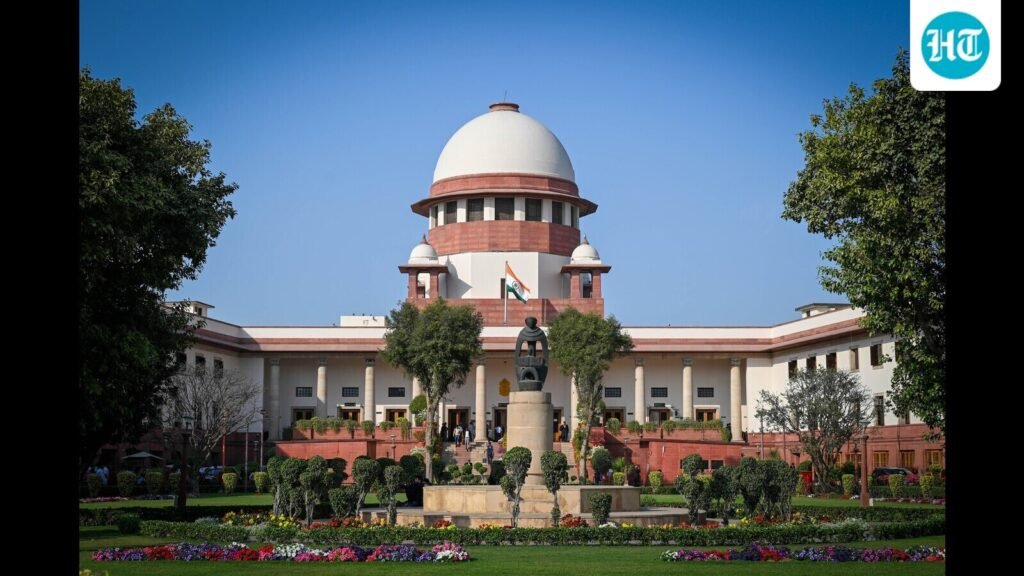
In the 1980s, India study at a crossroads. Industrial growth was accelerating; Populations were swelling; But regulation was weak, enforcement weaker. Then Two Major Industrial Accidents Happened. In December 1984, The Bhopal Gas Tragedy – Leakage of Methyl isocyanate from Union Carbide’s Factory – Killed Thousands. In December 1985, Toxic Oleum Gas Leaked From The Shri Ram Food & Fertilizers Plant in a denseli populated region of delhi.

These disasters were sharp reminders that Industrial Development in India Had Outpaced Both Safety Regulations and Legal Accountability. Mc Mehta Filed a Public Interest Litigation (PIL) Challenging Dangerous Industrial Practices and Weak Oversight. He argued that the oleum leak not only endangered lives but Violated the right to life enshrined in article 21. Mc mehta v. Union of India Thus trust a watershed moment in Indian environmental jurisprudence.
At that time, Indian law operated under Principles Inherited from British Common Law, Including Story Liability – Bedrock of Tort Law (Civil Wrongs) Rylands v. Fletcher (1868)Under this rule, an enterprise could be hand liveable for harm caused by it only if only if negligence is proved – and even then, defense was available.
In Mc Mehta 1986The Supreme Court Bench LED by Chief Justice PN Bhagwati, Reasoned that Industries Dealing with Hazardous Substans has a “non-delegable duty” to ensure safety. If their operations put public health at risk, they must bear the full cost of any Accident Regardless of Negligence. This LED to a Century-LD Rule in Rylands v. Fletcher Being replaced with the rule of “Absolute Libility” where Cases of Industrial Harm will have to be adjudicated under a more stringent standard of labor.
The onus of precautionary measures falls entryly on the enterprise engaged in hazardous activities. Further, the court stated that right to life must be read expansively to include the right to a clean and safe environment. This transformed article 21 from a personal protection clause into the backbone of environmental law.
The judgment has ripple effects and laid the foundation for subsequent judicial interventions. In the Vellore Citizens Welfare Case, The Principles in Mc Mehta was cited to enjoy the “polluter pays” and “precautionary” principles. It also also informed the environment (Protection) Act of 1986, Passed Shortly after the Oleum Leak. The case changes how Industries Approached Risk. Safety audits trust more than box-ticking exercises. Liability Insurance for Hazardous Industries Became a Standard Requirement.
A range of cases decided by the Supreme Court in 2025 Involving Environmental Conservation, Pollution, And Regulatory Clearance Bring Bring Back Memories of the 1980s.
Vanashakti v. Union of India Ree ex post facto Environmental Clearance. Restoring eX ante Risk Assessment and Legal Accountability in Advertisement Environmental Impact Assessments Sent a Clear Signal – That Human and Environmental Health Take Primacy Over Business and Profit Motivis.
The impact of judicial interventions this year itself is staggering. From enhanced penalties for illegal deforestation in agra, uttar pradesh; to classify zudpi lands in Maharashtra as foot land to protect the blockulture and local community. From ordering the odisha government to seek approval or demolish structures built in deomali mountains; To halting cutting of trees in Telangana’s Kancha Gachibowli Forest. From Investigating Violation of Laws Protecting Wildlife and Forests in the Agasthyamala Biosphere Reserve Spread Across Across Kerala and Tamil Nadu to Banning Plastic Products in the Fragile Nilgy Region of the Western Ghats.
However, the judiciary’s record is not without inconsistent. A Troubleing Pattern of Approvers for Projects that are ecologically damaging and environmentally disastrous is emerging. The Mumbai Coastal Road Project was cleared despite harm flagged to marine biodiversity. Infrastructural expansion was prioritized over protection of the Himalayas in the Char Dham Highway Plan Despite Warnings of Landslides. Studies showing environmental harm and displacement of people was overlooked in the etalin Hydro Project (Arunachal Pradesh) and Sardar Sarovar Project (Gujarat).
Legitimizing Activity in ecologically sensitive area risks undermining decades of conservation efforts. In a sharp reverse of its own stance, the Supreme Court Lifted a long-standing ban on construction in Madhya Pradesh’s Pachmarhi Biosphere.
It also weakens India’s stance in international forums. Prioritis Economic Interests Over Ecological Fragility Flies in the face of international norms, contradent the recent ruling by the International Court of Justice that Binds Nation States, BY Including India, International Law to prevent environmental harm.
India has robust environmental laws. But, Decisions Where Economic Development Trumps Ecological Safeguards Reflect a Troubleing Pattern. Without consistency, environmental jurisprudence will remain a promise made too often but kept too rarely.
Ashish Bharadwaj is Professor & Dean of Bits Pilani’s Law School in Mumbai. Insiyah vahanvaty is a sociopolitical writer and author of the Fearless Judge. The views expressed are personal




